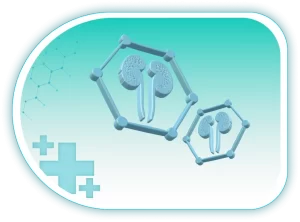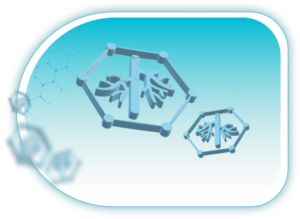During a colonoscopy treatment, a long, flexible tube (colonoscope) is inserted into the rectum. A tiny video camera on the edge of the tube enables the doctor to explore the entire inside of the colon.
If needed, polyps or other types of foreign tissue can be removed through the scope during a colonoscopy procedure. Tissue samples (biopsies) may be taken during a colonoscopy as well.
Why Colonoscopy Treatment is being done?
Your doctor may recommend a colonoscopy to:
- Search for any signs and symptoms of gastrointestinal conditions. Colonoscopy procedure help the doctor explore potential causes of abdominal pain, rectal bleeding, chronic constipation, chronic diarrhea and other intestinal problems.
- Screening for colon cancer. If you are 45 or older and have an average risk of colon cancer — age is the only your risk factor for colon cancer — your doctor may recommend a colonoscopy every 5 years or if you had positive fecal occult blood test taken on two or three consecutive days. Colonoscopy is an option for screening for colon cancer.
- Explore more appendices. If you previously had polyps, your doctor may recommend a colonoscopy for follow-up and to investigate and eliminate polyps. This procedure is done to reduce the risk of colon cancer.
Risks
Colonoscopy poses few risks. Rarely, complications from colonoscopy may include:
- Adverse reaction to the sedative used during the test
- Bleeding from the site where a tissue sample (biopsy) was taken or the site that removed a polyp or other abnormal tissue.
- Tear in the colon or rectal wall (perforation)
How to prepare
Before a colonoscopy procedure, you will need to clean (empty) your colon. Any residue in your colon may block the view of your colon and rectum during the examination.
To empty your colon, your doctor may ask you to:
- Follow a special diet the day before the test. You usually won’t be able to eat solid food the day before the test. Drinks may be limited to clear liquids – plain water, tea and coffee without milk or cream, beef soup, and soft drinks. Avoid red fluids, which may be confused with blood during a colonoscopy. You may not be able to eat anything after midnight the night before the exam.
- Take a laxative. Your doctor will usually recommend a laxative in tablet or liquid form. You may be directed to take a laxative medicine the night before your colonoscopy, or you may be asked to use a laxative both the night before and the morning of the procedure. Since you may experience explosive diarrhea, it is recommended to drink clear liquids up to three hours before your exam to prevent dehydration.
Adjust your medications. Remind your doctor of your medications at least a week before the examination – especially if you have diabetes, high blood pressure, heart problems, or if you take medications or supplements that contain iron.
Also inform your doctor if you are taking aspirin or other blood-thinning medications, such as warfarin (Coumadin, Jantoven); Newer anticoagulants such as dabigatran (Pradaxa) or rivaroxaban (Xarelto), which are used to reduce the risk of macular clots or stroke; Or heart medications that affect platelets, such as clopidogrel (Plavix).
You may need to adjust your dose or stop taking the medications temporarily.
What you can expect
During the Colonoscopy Treatment:
You will wear a medical shirt during the colonoscopy, and most likely you will not wear another. Anesthesia (Sedation) is usually recommended. Sometimes a mild anesthetic is given in pill form. In other cases, anesthesia is given in combination with an IV pain reliever to reduce any discomfort.
The examination begins with lying on your side on the examination table, usually with your knees closed toward your chest. The doctor inserts a colonoscope into the rectum.
The endoscope – long enough to reach anywhere in the colon – contains a torch and a tube (channel) that allows the doctor to pump air or carbon dioxide into the colon. Colon air or carbon dioxide is inflated; This gives the doctor a better view of the colon lining.
If the scope is moved or the air is pumped out, you may feel cramping or an urgent need to have a bowel movement.
The colonoscope also has a tiny camera on its head. The camera sends the images to an external monitor, which enables the doctor to examine the inside of the colon.
A doctor may also insert tools through the canal to take tissue samples (biopsies) or remove polyps or other foreign tissue.
The colonoscopy takes between 30 and 60 minutes.
After the Colonoscopy Procedure:
It takes about an hour to begin to recover from the anesthetic after the test. You will need someone to take you home because it can take up to a day for the full effects of the drug to wear off. So, don’t drive, make any important decisions, or go back to work all day.
If your doctor removes a polyp during a colonoscopy, he or she may recommend that you follow a special diet temporarily.
You may feel bloated or want to pass gas for a few hours after the test due to the emptying of air inside the colon. Walking may help relieve discomfort.
You may also notice a small amount of blood when you first have a bowel movement after the test. Usually this is not a cause for concern. Consult your doctor if you continue to have a bowel movement accompanied by blood or blood clots or if you have persistent abdominal pain or fever. Although not likely, it may happen immediately or in the first few days after the procedure, but it may be delayed for up to one to two weeks.
Results
Your doctor will review the results of your colonoscopy and then share them with you.
Negative Result:
Colonoscopy is considered negative if the doctor finds no effects of colonic disorder.
Your doctor may also recommend another colonoscopy:
- Within 5 years, if you have an average risk of colon cancer – you have no colon cancer risk factors other than age
- Within two years, if you had a history of colon polyps during previous colonoscopy
Positive Results:
A colonoscopy is positive if the doctor finds any polyps, polyps, or abnormal tissue in the colon.
Most polyps are not cancerous (hyperplasia), but some can be precancerous (adenoma). Polyps removed during colonoscopy are sent to a laboratory for analysis to determine whether they are cancerous, precancerous, or non-cancerous.
You may need to follow a stricter monitoring schedule in the future to look for more polyps, depending on the size and number of polyps.
If your doctor finds one or two polyps (adenomas) less than 0.4 inches (1 centimeter) in diameter, he or she may recommend a repeat colonoscopy within two years, depending on your risk factors for colon cancer.
Your doctor will recommend another colonoscopy sooner if you have:
- More than two polyps (adenomas)
- One large polyp – greater than 0.4 inch (1 centimeter)
- Polyps and also stool remaining in the colon prevents a full colon examination
- Polyps with distinct cells that indicate a greater risk of cancer in the future
- Cancerous lesion
If a cancerous lesion is planned to be removed endoscopically, it is usually excised by the technique called ESD (endoscopic submucosal dissection), which is exclusively performed under in-patient setting.
Problems with the test:
If the doctor is concerned about the quality of the endoscopic presentation, he or she may recommend a repeat of the colonoscopy or shortening the recommended period for this test to be repeated. If the doctor cannot insert the endoscope through the entire colon, it may be best to perform a barium enema or virtual colonoscopy (CT-colonoscopy) to examine the rest of the colon.
Japanese Board-certified Gastroenterological Surgeon
結腸内視鏡検査
結腸内視鏡検査は、大腸(結腸)と直腸の病変を検出するために使用される検査です。
結腸内視鏡検査では、長くて柔軟なチューブ(結腸鏡)が直腸に挿入されます。チューブの端にある小さなビデオカメラにより、医師は結腸の内部全体を探索することができます。
必要に応じて、結腸内視鏡検査中にポリープまたは他の種類の外来組織をスコープから取り除くことができます。結腸内視鏡検査中にも組織サンプル(生検)を採取することができます。
検査の適用
医師は結腸内視鏡検査を次の場合に勧めることがあります。
-胃腸の状態の兆候や症状を探します。結腸内視鏡検査は、医師が腹痛、直腸出血、慢性便秘、慢性下痢、その他の腸の問題の考えられる原因を調査するのに役立ちます。
-結腸がんのスクリーニング。 45歳以上で、結腸がんの平均リスクがある場合(年齢が結腸がんの唯一の危険因子)、医師は5年ごとに結腸内視鏡検査を勧めるか、2日あるいは3日法による便潜血検査が陽性であった場合。結腸内視鏡検査は、結腸がんのスクリーニングのためのオプションです。
-前回の内視鏡検査でポリープがあった場合、医師はフォローアップとポリープの調査と除去のために結腸内視鏡検査を勧めることがあります。この手順は、結腸がんのリスクを減らすために行われます。
リスク
結腸内視鏡検査はほとんどリスクをもたらしません。 まれに、結腸内視鏡検査による合併症には以下が含まれる場合があります。
-試験中に使用された鎮静剤に対する有害反応
-組織サンプル(生検)が採取された部位、またはポリープやその他の異常組織を除去した部位からの出血。
-結腸または直腸壁の裂傷(穿孔)
準備の仕方
結腸内視鏡検査の前に、結腸をきれいにする(空にする)必要があります。 結腸に残留物があると、検査中に結腸が見えなくなる可能性があります。
結腸を空にするために、以下の推奨に従って下さい:
-テストの前日は特別食を摂ってください。 通常、試験の前日に固形食を食べることはできません。 飲み物は透明な液体に限定される場合があります-普通の水、ミルクやクリームを含まないお茶とコーヒー、牛肉のスープ、ソフトドリンク。 結腸内視鏡検査中に血液と混同される可能性のある赤い液体は避けてください。 試験前夜の深夜以降は何も食べられません。
-下剤を服用してください。医師は通常、錠剤または液体の形で下剤を処方します。大腸内視鏡検査の前夜に下剤を服用するように指示される場合もあれば、手術の前夜と朝の両方に下剤を使用するように求められる場合もあります。爆発的な下痢を経験する可能性があるため、脱水症状を防ぐために、検査の3時間前まで透明な液体を飲むことをお勧めします。
あなたの薬を調整します。特に糖尿病、高血圧、心臓の問題がある場合、または鉄分を含む薬やサプリメントを服用している場合は、検査の少なくとも1週間前に医師に薬を確認してください。
また、アスピリンやワルファリン(クマディン、ヤントーベン)などの他の抗凝血薬を服用している場合は医師に知らせてください。黄斑血栓または脳卒中のリスクを軽減するために使用される、ダビガトラン(プラダクサ)またはリバロキサバン(ザレルト)などの新しい抗凝固剤。または、クロピドグレル(プラビックス)などの血小板に影響を与える心臓薬。
あなたはあなたの用量を調整するか、一時的に薬の服用をやめる必要があるかもしれません。
検査当日
検査中
大腸内視鏡検査中は医療用衣を着用しますが、ほとんどの場合、他には着用しません。通常、麻酔(鎮静)が推奨されます。時々、穏やかな麻酔薬が錠剤の形で与えられます。その他、不快感を軽減するために、点滴鎮痛剤と組み合わせて鎮静が行われます。
検査は、通常、膝を胸に向けて閉じた状態で、検査台の上に横になることから始まります。医師は結腸内視鏡を直腸に挿入します。
内視鏡(結腸のどこにでも届く長さ)には、医師が空気または二酸化炭素を結腸に送り込むことができるトーチとチューブ(チャネル)が含まれています。結腸は空気または二酸化炭素で拡張します。これにより、医師は結腸の内壁をよりよく見ることができます。
スコープを動かしたり、空気を抜いたりすると、けいれんを感じたり、排便衝動が起きたりすることがあります。
結腸内視鏡の頭には小さなカメラもあります。カメラは画像を外部モニターに送信します。これにより、医師は結腸の内部を調べることができます。
医師は、組織サンプル(生検)を採取したり、ポリープやその他の外来組織を除去したりするために、腸管に鉗子を挿入することもあります。
結腸内視鏡検査には30〜60分かかります。
検査後
検査後、麻酔薬から回復するまで約1時間かかります。 薬の効果が完全になくなるまでに最大1日かかることがあるため、家に連れて帰る人が必要になります。 ですから、運転したり、重要な決定をしたり、その日のうちに仕事に戻ったりしないでください。
大腸内視鏡検査中に医師がポリープを切除した場合、医師は一時的に特別食に従うことを勧める場合があります。
結腸内に空気を入れるため、膨満感を感じたり、検査後数時間ガスが出る場合があります。 歩くことは不快感を和らげるのを助けるかもしれません。
また、検査後に最初に排便したときに少量の血液に気付く場合があります。 通常、これは心配する必要はありません。 血液や凝血塊を伴う排便が続く場合、または腹痛や発熱が続く場合は、医師に相談してください。 可能性は低いですが、すぐに、または検査後の最初の数日で発生する可能性がありますが、最大1〜2週間遅れることがあります。
結果
あなたの医者はあなたの結腸内視鏡検査の結果を検討し、説明を行います。
陰性結果
医師が結腸障害を発見しなかった場合、結腸内視鏡検査は陰性と見なされます。
あなたの医者は次回の結腸内視鏡検査を勧めるかもしれません:
-5年以内:結腸がんの平均リスクがある場合(年齢以外の結腸がんの危険因子なし)
-2年以内:前回の結腸内視鏡検査中に結腸ポリープがあった場合
陽性結果
大腸内視鏡検査は、医師が結腸にポリープ、または異常な組織を発見した場合に陽性です。
ほとんどのポリープは癌性ではありませんが(過形成)、一部は前癌性(腺腫)である可能性があります。結腸内視鏡検査中に除去されたポリープは、癌性、前癌性、または非癌性であるかどうかを判断するための分析のために検査室に送られます。
ポリープのサイズと数によっては、将来、より厳しい監視スケジュールに従って、より多くのポリープを探す必要があるかもしれません。
医師が直径0.4インチ(1センチメートル)未満のポリープ(腺腫)を1つまたは2つ見つけた場合、結腸がんの危険因子に応じて、2年以内に結腸内視鏡検査を繰り返すことを勧める場合があります。
以下の場合、あなたの医者はより早く次回の結腸内視鏡検査を勧めます:
-2つ以上のポリープ(腺腫)
-1つの大きなポリープ-0.4インチ(1センチメートル)より大きい
-結腸に便が残っていたため、完全な結腸検査が出来なかった場合
-将来の癌のリスクが高いことを示す明確な細胞を持つポリープ
-癌性病変
癌性病変を内視鏡的に切除する予定の場合は、通常、入院治療が必要であるESD(内視鏡的粘膜下層剥離術)と呼ばれる手法で切除されます。
検査の問題
内視鏡検査の質が心配な場合は、大腸内視鏡検査を再度行うか、次回検査までの期間を短くすることをお勧めします。 医師が結腸全体に内視鏡を挿入できない場合は、バリウム注腸検査または仮想結腸内視鏡検査(CT結腸内視鏡検査)を行って残りの結腸を検査する場合があります。


















